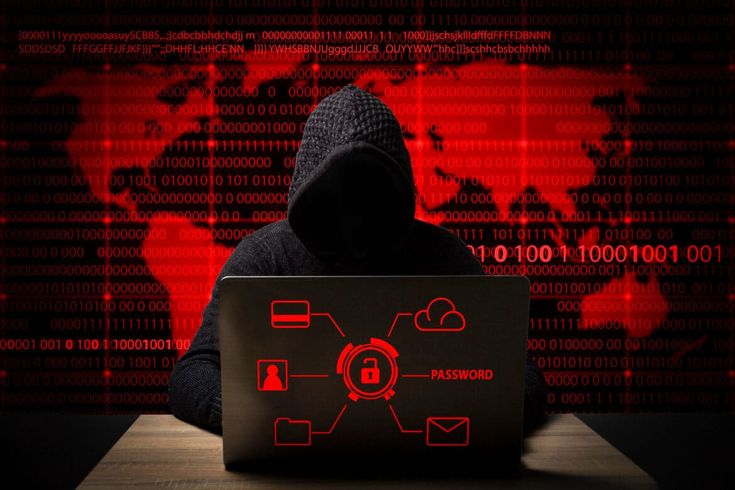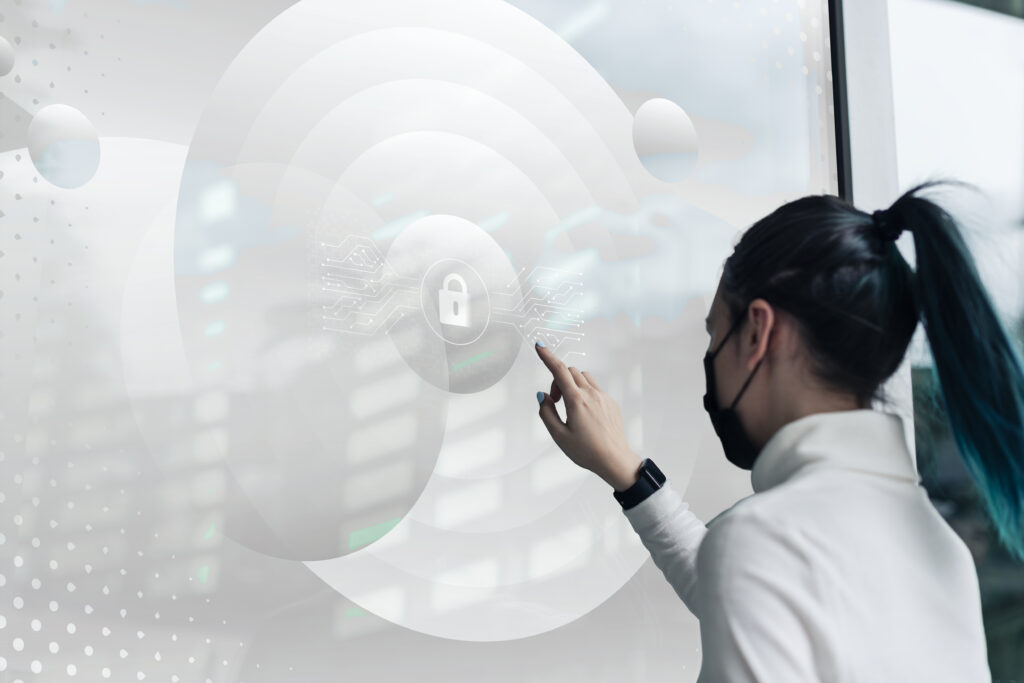As we move advance into the 21st century, cybersecurity remains one of the most basic concerns for people, businesses, and governments alike. With innovation progressing at a quick pace, the scene of cybersecurity is continually advancing. By 2025, the danger scene will see altogether diverse, and the strategies utilized to ensure against cyber dangers will advance nearby it. In this article, we’ll investigate the key patterns in the future of cybersecurity that are anticipated to shape the future by 2025.
1. The Rise of Fake Insights in Cybersecurity
Artificial Insights (AI) and Machine Learning (ML) are as of now making waves in different businesses, and cybersecurity is no special case. By 2025, AI is set to ended up a necessarily portion of cybersecurity framework, making a difference organizations identify and react to cyber dangers more productively than ever before.

AI for Risk Location and Response
AI-powered frameworks will be able to analyze endless sums of information in real-time, recognizing suspicious designs and irregularities much quicker than human investigators. This will permit for faster distinguishing proof of cyberattacks, diminishing the reaction time altogether. Machine learning calculations can be prepared to spot modern sorts of malware, phishing endeavors, or other sorts of cyberattacks, making them progressively viable in blocking dangers some time recently they cause harm.
Automated Occurrence Response
In expansion to discovery, AI will moreover play a part in robotizing occurrence reaction. By 2025, AI will be utilized to naturally neutralize dangers, fix vulnerabilities, and caution security groups without human mediation. This mechanization will not as it were speed up the reaction time but moreover free up cybersecurity experts to center on more complex errands that require human insight.
2. The Proceeded Development of Ransomware Attacks
Ransomware assaults have gotten to be one of the most predominant and harming shapes of cybercrime in later a long time, and they appear no signs of abating down by 2025. In a ransomware assault, programmers scramble the victim’s information and request a emancipate in trade for the unscrambling key.

Targeting Basic Infrastructure
One of the most stressing patterns is the expanding focusing on of basic foundation, such as healthcare frameworks, vitality frameworks, and transportation systems. By 2025, we can anticipate more advanced and facilitated ransomware assaults pointed at causing broad disturbance. These assaults may not as it were be fiscally spurred but might too be politically driven, with state-sponsored programmers endeavoring to cause chaos in match nations.
Ransomware-as-a-Service
Ransomware-as-a-Service (RaaS) is a developing drift that permits cybercriminals to dispatch ransomware assaults without requiring to have specialized ability. This benefit gives programmers with ready-made instruments, permitting indeed low-level hoodlums to get included in ransomware campaigns. As this drift develops, the number of ransomware assaults will likely increment, and the affect may be more broad, influencing both huge enterprises and little businesses.
Prevention and Reinforcement Systems
To combat this developing danger, organizations will require to contribute in vigorous reinforcement frameworks and cybersecurity preparing. Standard reinforcements, combined with solid security conventions, will be fundamental to relieve the impacts of ransomware assaults. Also, as ransomware gets to be more modern, AI-based security frameworks will require to advance to distinguish and square these assaults some time recently they can take hold.
3. Zero Believe Security Models
The conventional security demonstrates, which depends on border guards like firewalls to secure an organizations organize, is progressively obsolete. With more representatives working remotely and businesses depending on cloud administrations, the thought of a clearly characterized “edge” has gotten to be obsolete.
What is Zero Trust?
Zero Believe is a security demonstrate based on the rule of “never believe, continuously verify.” In a Zero Believe environment, no one — whether interior or exterior the organization — is trusted by default. Each client, gadget, and framework is persistently confirmed, in any case of whether they are inside the organizations arrange or working remotely.
Implementation by 2025
By 2025, Zero Believe models will have gotten to be the standard for cybersecurity over businesses. This approach will require organizations to convey progressed personality and get to administration frameworks, nonstop checking, and multi-factor confirmation (MFA). The center will be on restricting get to as it were the assets that each client needs and ceaselessly confirming their personality. As farther work proceeds to develop, actualizing Zero Believe will be crucial to ensuring touchy information and anticipating insider threats.
4. Quantum Computing and Its Effect on Cybersecurity
Quantum computing, a quickly progressing field of innovation, guarantees to revolutionize numerous regions of science and industry. In any case, it too postures a critical danger to conventional encryption strategies utilized in cybersecurity today.
The Risk to Encryption
Current encryption conventions depend on the trouble of tackling certain numerical issues, such as calculating huge numbers. Be that as it may, quantum computers have the potential to unravel these issues much speedier than classical computers, which seem render current encryption calculations out of date. By 2025, quantum computers may be effective sufficient to break widely-used encryption frameworks, putting delicate data at risk.
Post-Quantum Cryptography
To get ready for this, analysts are as of now creating modern encryption strategies that are safe to quantum assaults, known as post-quantum cryptography. By 2025, these modern cryptographic calculations will likely be coordinates into cybersecurity frameworks, guaranteeing that information remains secure indeed in the age of quantum computing. Organizations will require to begin planning for the post-quantum period by embracing these unused encryption standards.
5. The Development of Cloud Security
As more businesses move their information and operations to the cloud, cloud security will have ended up an indeed more critical concern. By 2025, the lion’s share of organizations will have received cloud-based foundations, which will increment the assault surface for cybercriminals.

Cloud Security Challenges
While cloud administrations offer adaptability and versatility, they too present unused dangers. Information put away in the cloud can be helpless to breaches, particularly if legitimate security measures aren’t input. Also, misconfigured cloud situations and powerless get to controls are common causes of cloud-related information breaches.
Enhanced Cloud Security Tools
To address these challenges, cloud benefit suppliers will proceed to make strides their security offerings. By 2025, organizations will require to execute more grounded cloud security hones, counting way better encryption of information in travel and at rest, upgraded checking instruments, and multi-cloud security methodologies. Cloud get to security brokers (CASBs) and progressed risk location frameworks will moreover play a key part in securing cloud environments.
6. The Rise of Cybersecurity Abilities Shortage
As cyber dangers proceed to increment in both complexity and volume, the request for gifted cybersecurity experts will exceed supply. By 2025, the cybersecurity aptitudes crevice will have ended up indeed more articulated, making it harder for organizations to enlist qualified experts to oversee their security operations.
Closing the Aptitudes Gap
To combat this deficiency, organizations will require to contribute in preparing and upskilling programs. Moreover, governments and instructive educate will require to collaborate to advance cybersecurity as a career way. Mechanization instruments, like AI-based risk location, will too offer assistance moderate the effect of the aptitudes deficiency by permitting cybersecurity groups to center on higher-level tasks.
7. Cybersecurity and Protection Regulations
As information protection gets to be an expanding concern for buyers, governments around the world are fixing directions to guarantee that organizations handle individual information capably. By 2025, we can anticipate more exacting cybersecurity and protection laws to be actualized, especially in the wake of major information breaches and developing open awareness.

GDPR and Beyond
The European Union’s Common Information Assurance Control (GDPR) has as of now set a worldwide standard for information security, but other districts will likely take after suit with comparative controls. Organizations will require to comply with these laws, which may require them to actualize stricter security measures and make strides straightforwardness in how they handle client information. Non-compliance seem result in strong fines and reputational damage.
Conclusion:
The future of cybersecurity is both challenging and energizing. As innovation proceeds to advance, so as well will the dangers we confront, requiring modern and inventive approaches to cybersecurity. By 2025, we can anticipate to see a more noteworthy dependence on manufactured insights, the broad selection of Zero Believe models, and progressions in cloud and post-quantum security. At the same time, organizations must plan for the developing dangers postured by ransomware and the cybersecurity abilities shortage.
By remaining ahead of these patterns, businesses and people can superior secure themselves in a progressively associated and advanced world. The future of cybersecurity may be dubious, but one thing is clear: the require for strong, forward-thinking security arrangements will as it were proceeding to develop.
Read more posts:

